
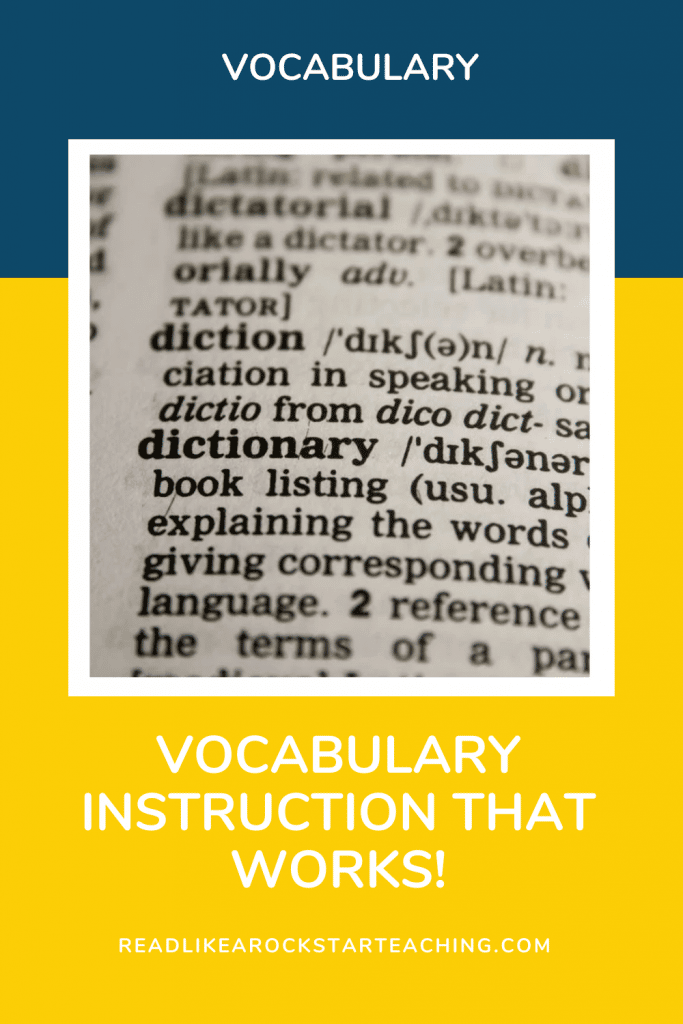
I recently took a poll on IG and asked educators to choose which of the 5 components of reading they felt like they struggled the most to teach effectively.
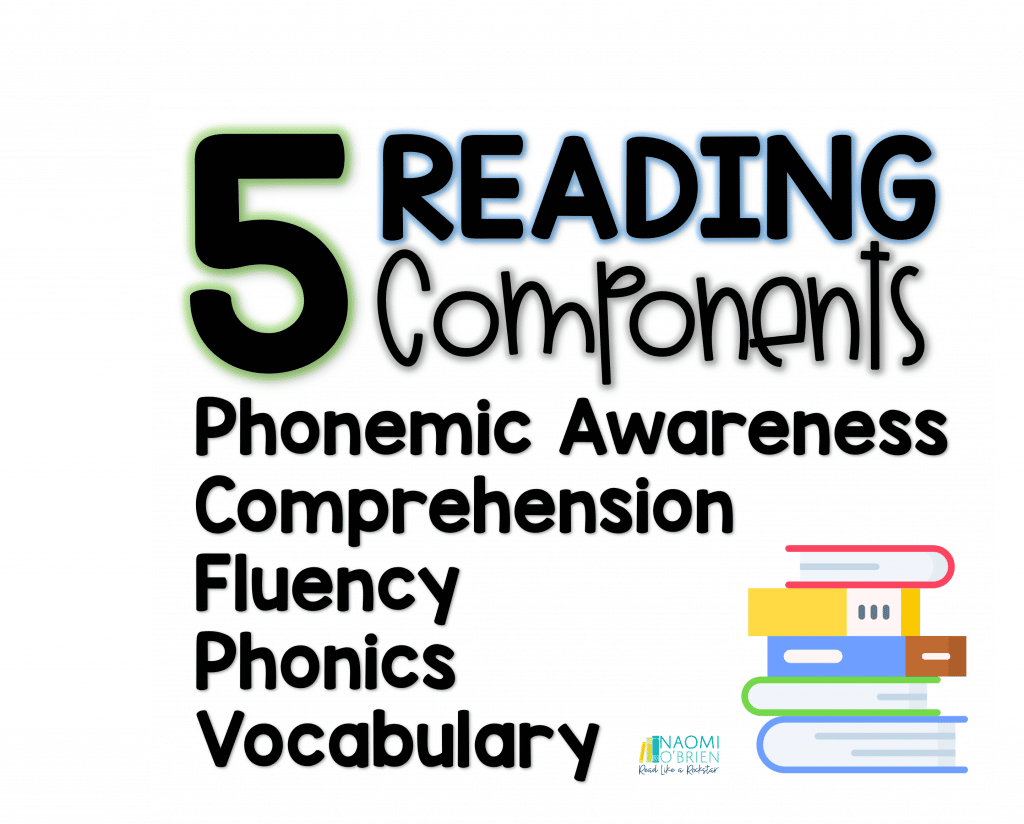
Out of 1,600+ people who answered, the average answer was vocabulary. Does this ring true for you? For my first few years in the classroom, the same was true for me until I decided to do something about it.
A big mistake that I used to make was relying on the vocabulary words from my read aloud time to count as vocabulary instruction. While that is a great time to get some vocabulary instruction in, that can not be where it ends. Students need multiple and meaningful exposure and practice with vocabulary words before they really stick.
Briefly telling students a few words from one book or assigning them as weekly vocabulary words to know for a spelling test, doesn’t allow students the time needed for these words to sink in and become a part of their vocabulary.
I wanted my students to be able to add the words that I explicitly taught them to their own vocabularies. I wanted to see these words pop up in their writing well past the week they were assigned. I wanted to hear them use the words in their everyday conversations. I hate to say it, but I also wanted to see their test scores increase.
When my students did STAR testing, all of their scores were great and showing exceptional growth except for the vocabulary area. Once I began looking into effective vocabulary strategies, I realized I was doing a lot of things wrong. I found a way to increase their vocabulary (in their conversation and writing) and increase their scores as well. A win-win. Oh, and did I mention I did all of this in 10 minutes or less a day?!
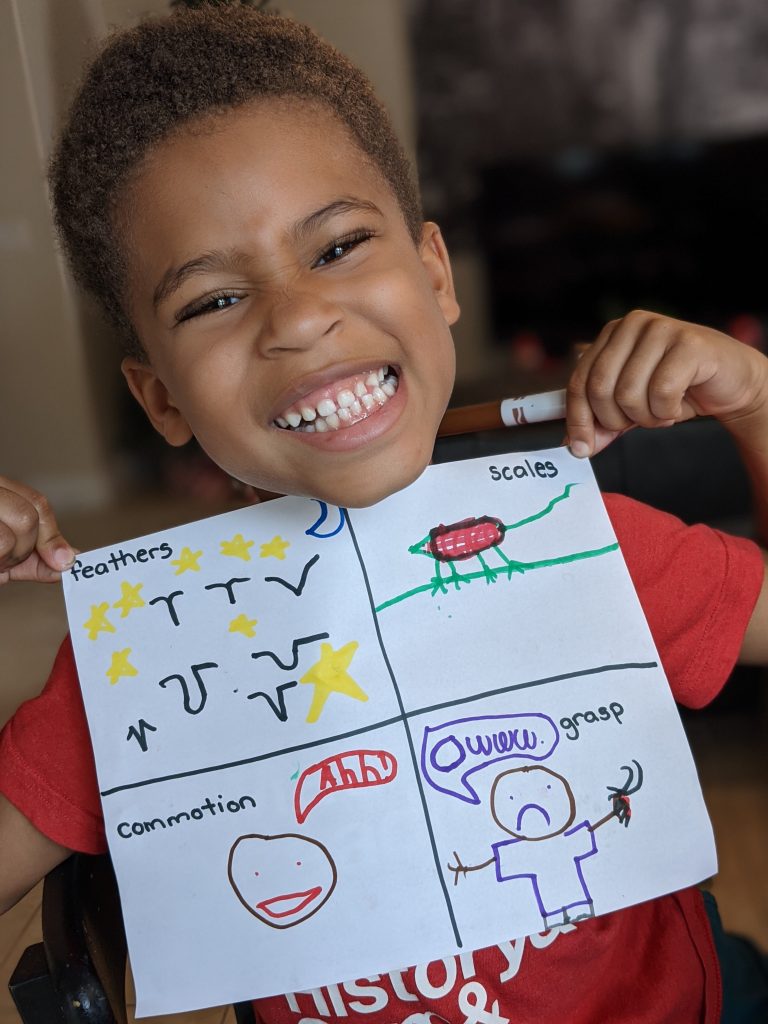
If you’re anything like my best friend, LaNesha, she needs to know the WHY behind everything before she can get into it. So, let’s talk about why vocabulary is so important.
-If kids can say all the words in a book, but they don’t know what they are reading….they can’t read.
-Vocabulary is said to improve reading, writing, listening skills, and speaking skills.
-Vocabulary is directly related to success at school.
-It teaches our students about the world and helps them access new information.
-Students can make sense of the words they read when they know what the words mean.
I taught my students a combination of Tier 1 and Tier 2 words. Even though tier 1 words typically don’t require direct instruction, many of my students have been emerging bilinguals and did need some words to be taught with explicit instruction. That’s okay. We adapt to the students in front of us, right? A quick Google search brought me plenty of tier 1 and 2 words to teach to my students.
Tier 1 Words: Basic words that is commonly used in everyday, spoken language. (Ex: dog, chair, sad)
Tier 2 Words: High frequency words that will appear frequently across content areas. (Ex: gather, discover, ancient)
So, now that you know where my words came from and why vocabulary instruction is so important, I’ll walk you through an easy to implement routine that you can use with your learners. It will work for any words you have.
My students scores increased drastically, and best of all, my students were using these words in conversation with me and with each other. They also used the words correctly in their writing all year long. Not just during the week we learned them. It made my teacher-heart so happy!
I decided to introduce 4 words a week for the entire year and give my students engaging and meaningful practice with these words for 10 minutes (or less) a day.
Let me break down each day for you:
(Note: The slides below follow the format I use to teach vocabulary daily. A trial week available for free in my Free Resource Library. You just have to sign up for the mailing list to receive the password.) Feel free to follow this model with words from your reading program or words that meet your students’ needs.
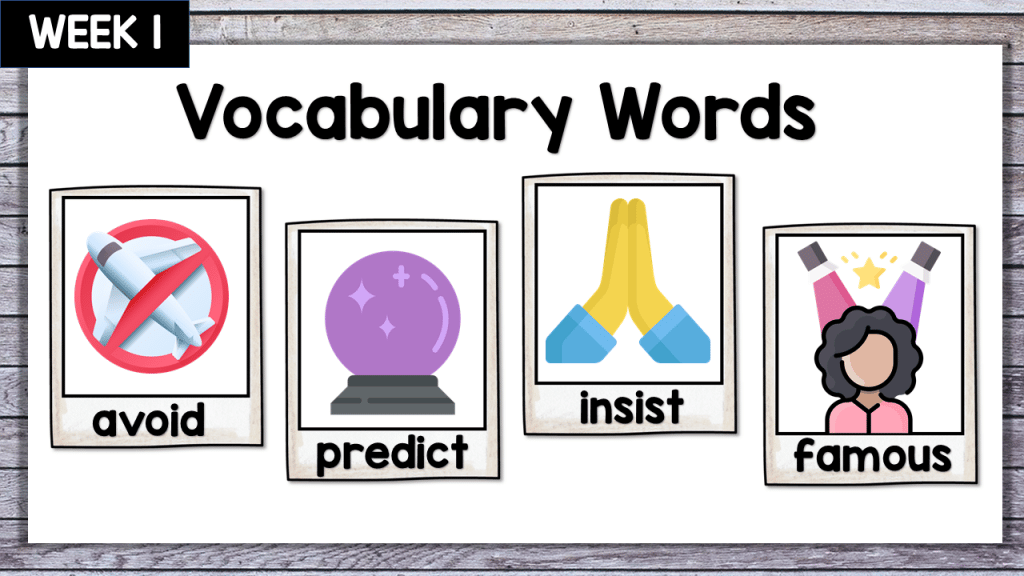

Everyone makes predictions with a partner and I even call on a few to share and other students can agree or disagree. After the story, I read them the definitions.

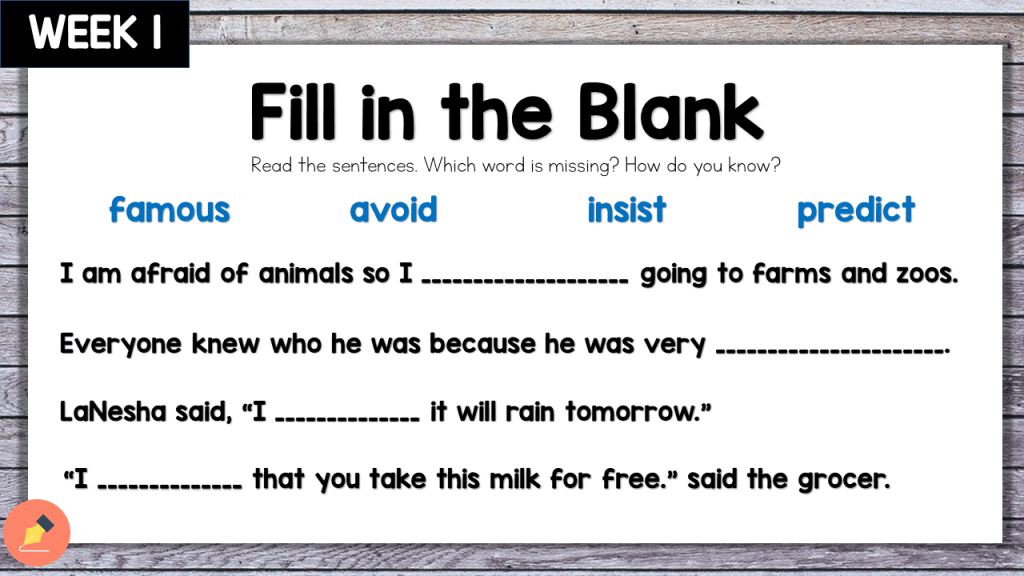
Show the pictures again. Ask students if anyone remembers what the words mean. Review the definitions. Try to come up with a motion or action to remember each word. Read students the fill in the blank sentences and see if they can put the right words in the blanks. Show students how you can plug in different words and check to see if they make sense. Fill in the words and then read each sentence with the right word all together. Ask students what the sentences mean. See if someone can create their own sentence.
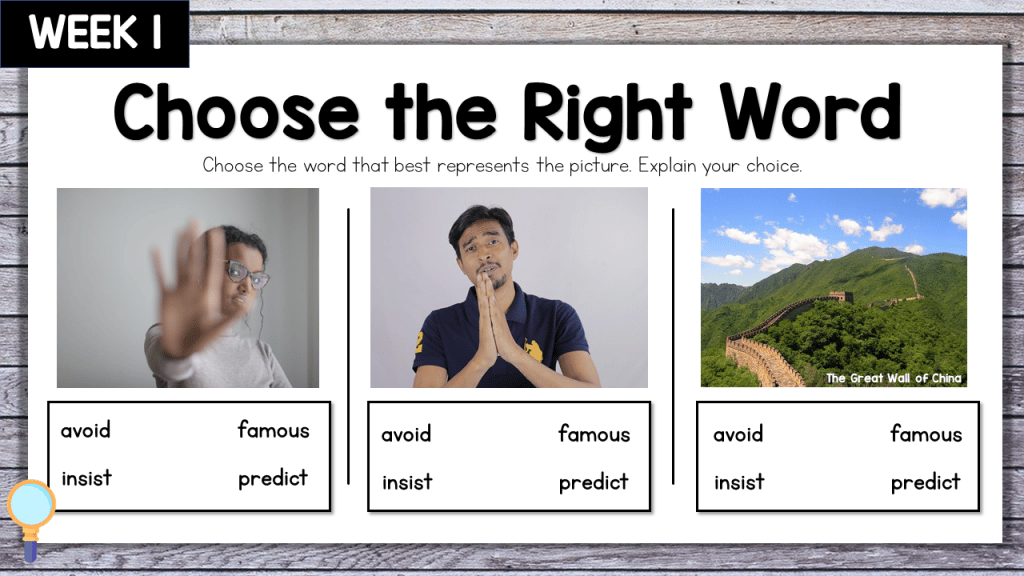
Day 3 is probably my favorite day. The meanings are really starting to sink in and they are able to think about them and their meanings in deeper ways.
Show the pictures again. Ask students if anyone remembers what the words mean. Review the definitions. Review any motions or actions from the previous day. Show students the Choose the Right Word slide. See if they can choose the best word to go with the picture you point to. Even if the answer seems obvious. Allow students to justify their reasoning. They may find that more than one-word fits if they really think about how to represent each word! (higher order thinking!) The mental gymnastics some of my students would come up with to try to make all 4 words match one picture was incredible!
Example: The Great Wall of China is a place I would avoid because I don’t like to travel. It’s a famous spot because a lot of people know about it. I think a lot people insist on going there because so many people want to see it. I predict hundreds of people will visit this year because it’s so popular.
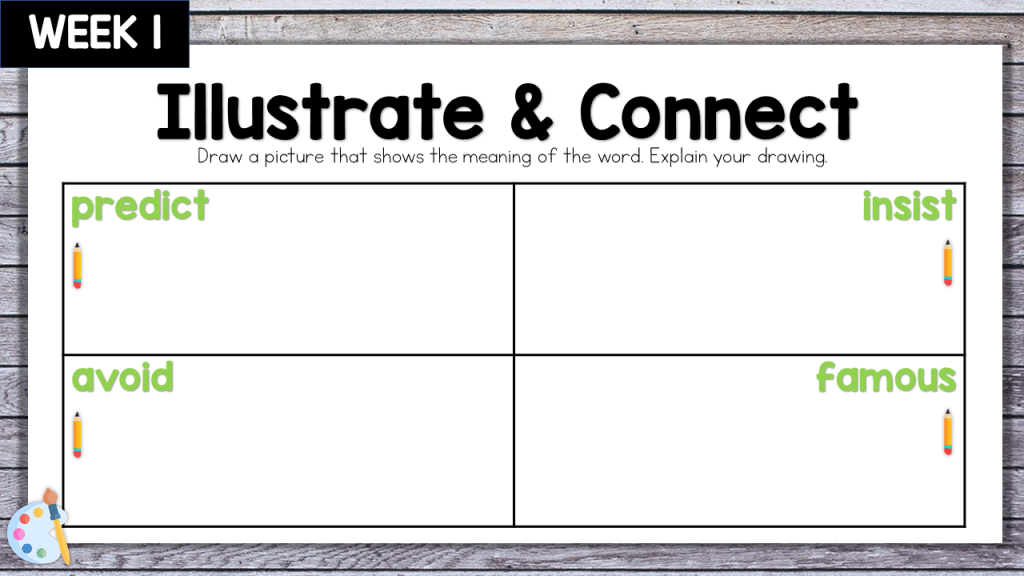
Show the pictures again. Ask students if anyone remembers what the words mean. Review the definitions. Review any motions or actions from the previous day. Give students dry erase boards or a paper divided into four parts. Display and read the words and ask students to make their own illustrations to show their understanding of each word and make their own connections. Allow students to share their drawings with partners or even with the whole class. My rule is that they can’t use any of the pictures I’ve shown them to depict the words.
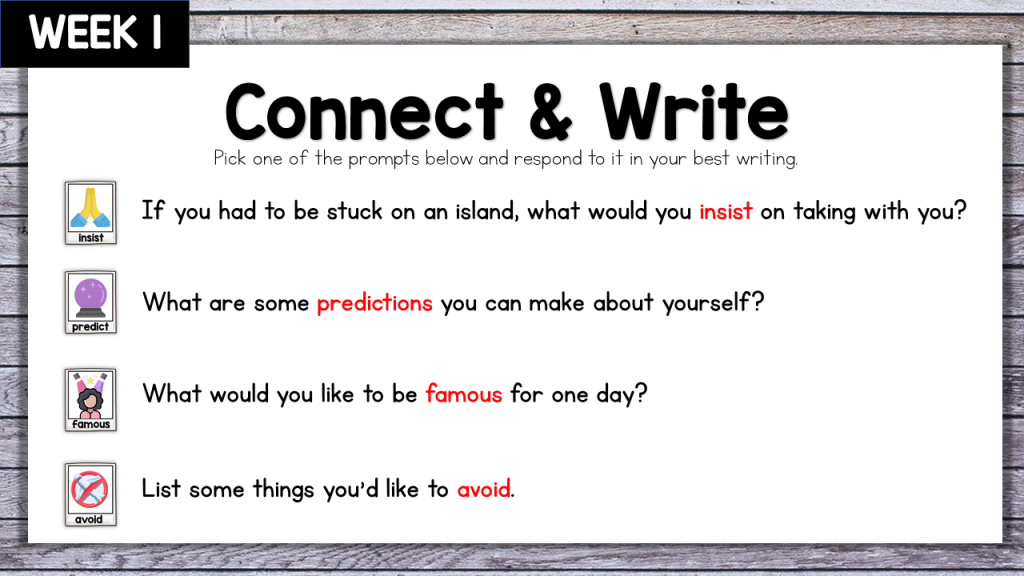
On the final day, show the pictures again. Ask students if anyone remembers what the words mean.
Review the definitions. Review any motions or actions from the previous day. By now,
your students should understand each word. Read them each of the
writing prompts and allow them to choose one prompt to answer without review the meanings again. Allow students to share their writing with partners or even with the whole class.
I had my students orally answer all of the questions. It went by quicker and worked best for my students that knew the meanings even if writing wasn’t their strongest area yet.
*For any students that are struggling with this, work with them in a small group while the
other students work independently. Pick one prompt, review the definition, and plan with
students how to answer the question. Write with them and help them use the word in their
Writing
*For students that master the words quickly, challenge them to make their own sentences,
poems, or stories using the words and invite them to share with their peers. Challenge
them to create a game that will teach their peers who still need help.
The bottom line is that your students have to do something with the words and do something repeatedly. Encourage them to draw pictures, think of synonyms and antonyms, listen to the words in a story, match them to a picture, define them, act them out, use them in a sentence- just encourage engagement daily!
That’s what helped me. I could squeeze these activities in each day after small group rotations were over, but before we went out for morning recess. As students fell into the routine of things we were able to efficiently learn vocabulary this way daily.
I also added our words to a growing list for students to reference year round.
If you’d like to try a week for free, sign up for my email list to gain access to the resource! Click the image below or click here.
I hope this was helpful!
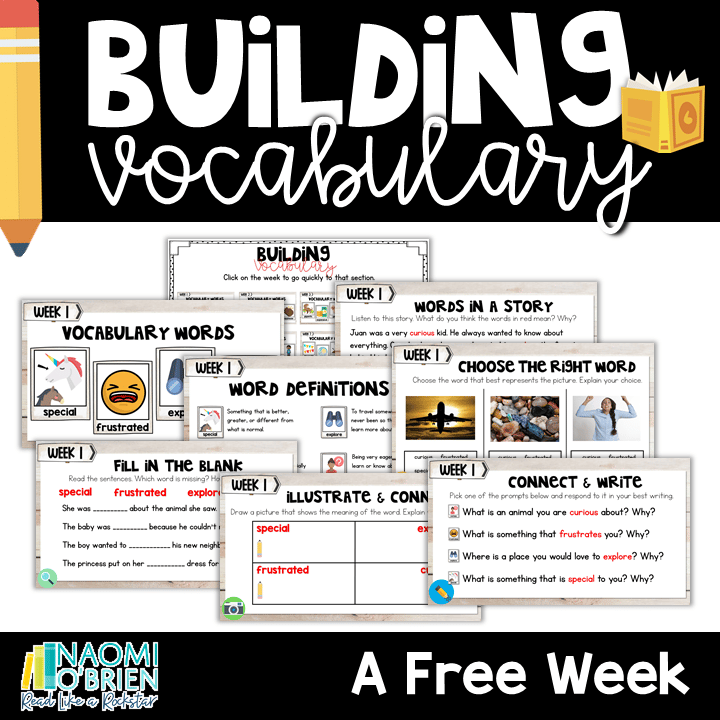
Click on the image below or here to see more vocabulary resources.



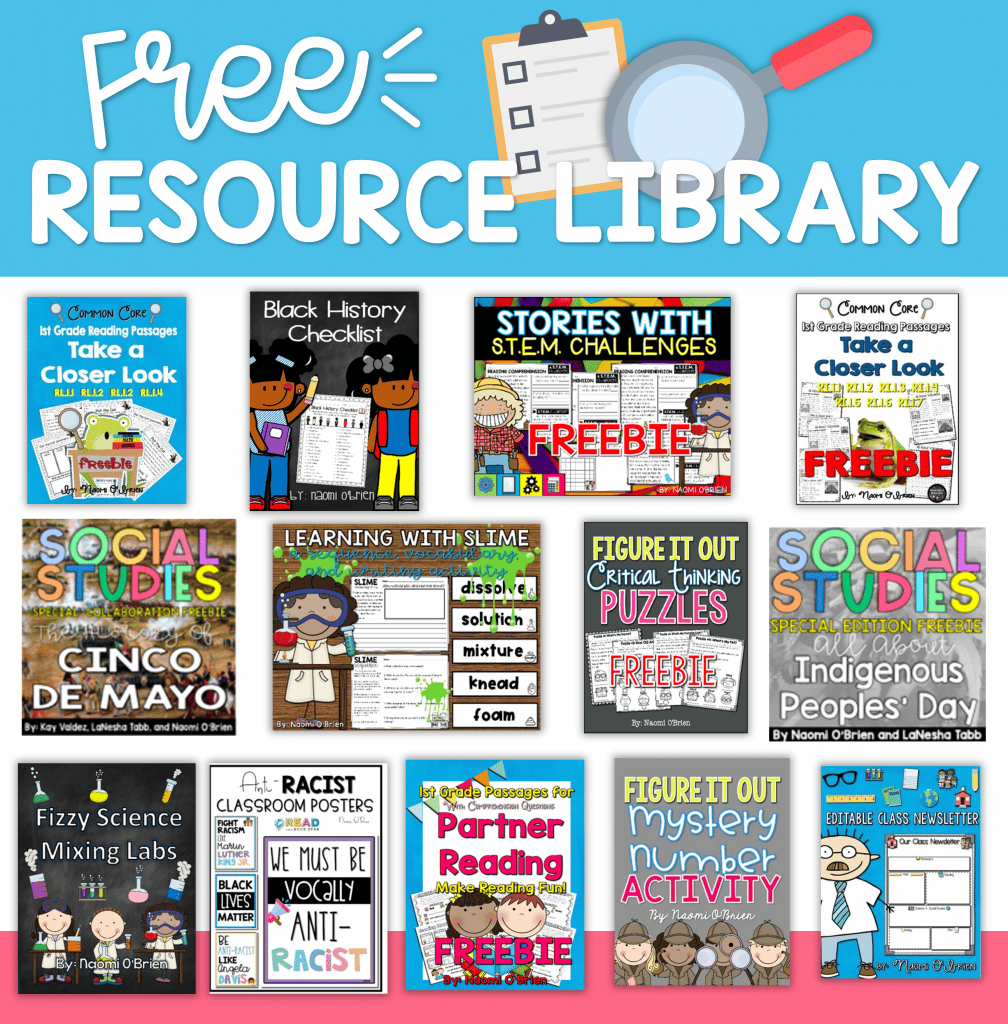
| Cookie | Duration | Description |
|---|---|---|
| cookielawinfo-checkbox-analytics | 11 months | This cookie is set by GDPR Cookie Consent plugin. The cookie is used to store the user consent for the cookies in the category "Analytics". |
| cookielawinfo-checkbox-functional | 11 months | The cookie is set by GDPR cookie consent to record the user consent for the cookies in the category "Functional". |
| cookielawinfo-checkbox-necessary | 11 months | This cookie is set by GDPR Cookie Consent plugin. The cookies is used to store the user consent for the cookies in the category "Necessary". |
| cookielawinfo-checkbox-others | 11 months | This cookie is set by GDPR Cookie Consent plugin. The cookie is used to store the user consent for the cookies in the category "Other. |
| cookielawinfo-checkbox-performance | 11 months | This cookie is set by GDPR Cookie Consent plugin. The cookie is used to store the user consent for the cookies in the category "Performance". |
| viewed_cookie_policy | 11 months | The cookie is set by the GDPR Cookie Consent plugin and is used to store whether or not user has consented to the use of cookies. It does not store any personal data. |
Thank you for your interest in booking a private professional development experience! Please fill out our Booking Inquiry form and a member of our team will contact you soon.